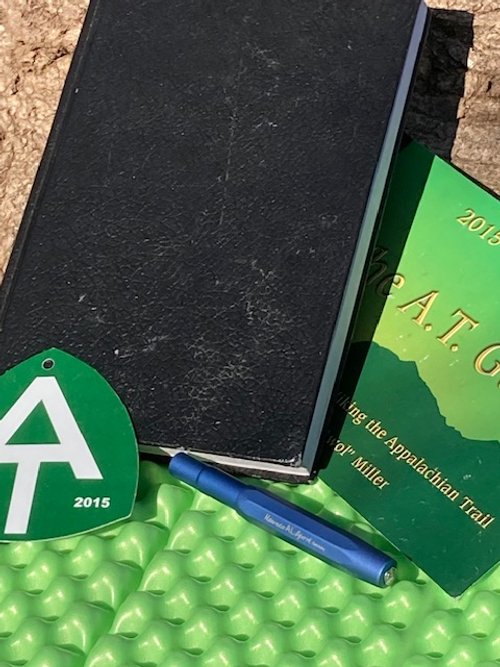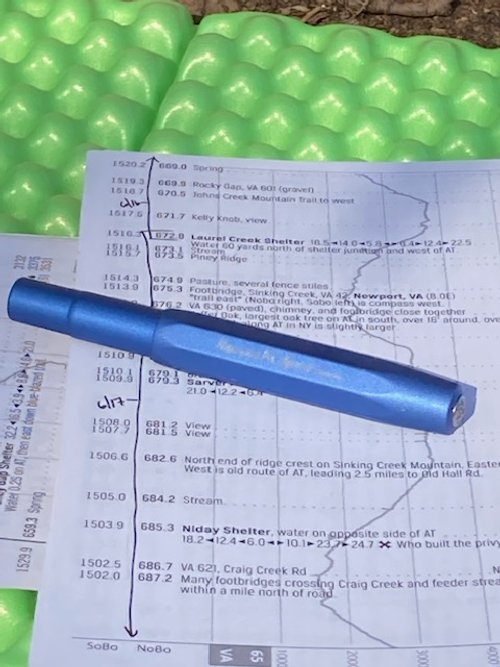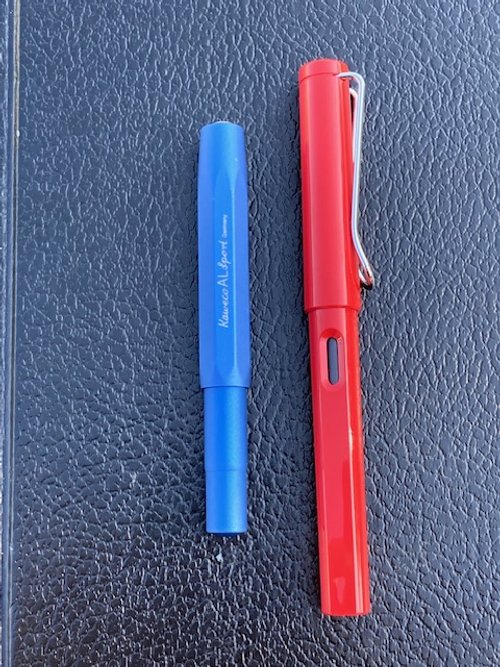Trail Journaling
For those of you who followed me on my 2015 thru hike of the Appalachian Trail, you will know that my trail name is Scribe. It was given to me by one of my fellow “Easter Pod” members, MacGyver, about 4 or 5 days into our hike. For those first few days (err…weeks), we kept mileage down as we got used to our gear and found our trail legs. This meant we spent a good deal of time at camp. Lazy mornings led to late starts, and short mileage led to quick hikes, which put us into camp easily by 3 or 4 every afternoon. Once camp was set up, water was filtered, and snacks were eaten, there was time to just… sit. Some talked a little, getting to know each other. Some played cards. Some asked for or gave tips on best practices for setting up tents, cooking on new stoves, or meal planning ideas. And while I did participate in most of those activities, I also journaled. Every day. Sometimes more than once in a day. And in those early days, when there was an abundance of spare time, I did my journaling straight into my notebook with a trusty fountain pen.
Choose Your Weapon
My sword of choice for my hike was the Kaweco AL Sport fountain pen, with a fine nib, loaded with Graf von Faber-Castell Carbon Black ink cartridges. The AL Sport has an aluminum pen body, measuring about 4” when capped, and 5” when posted (where the cap is put on the back end while writing) which is required for any length of writing, at least for me. It’s a fairly light weight pen, weighing in at 0.68oz (19g) when empty, while having enough weight to be comfortable in hand while using. I had purchased this pen specifically for my hike after having used a (lighter) plastic Sport for some time beforehand and enjoying the experience. I made sure to test the pen and ink combination, to ensure it worked as it should and would be suitable for me for the duration, knowing that cleaning sessions would be few and far between.
Why this combo?
Simple and small-sized, but comfortable to use, stylish without being fancy, reliable and sturdy. The metal body can withstand more abuse than the plastic body versions, and by the end of my hike had developed a nice “patina” of scratches, smudges, and worn spots - the grip section even fading to a light blue. Uses an ink cartridge for simple refills. Has a screw on cap, to ensure any ink that spills stays in the cap, not in my pack. The ink was less about choice than the pen – it was the only permanent ink in a cartridge I could find at the time. I wasn’t sure how damp my journal would get, and wanted to ensure the ink didn’t end up washing off. Looking back, I have no complaints about the combination, either. Both worked flawlessly throughout my hike.
Those into pens will be wondering about the third component to the fountain pen triad – the paper. Here’s where I went cheap. I knew I wanted an A5-ish sized notebook, that it needed to have a hard cover since I would be writing “on my knee” a lot, and that I did not want the super thin paper of some journals out there (I’m looking at you, Tomoe River… love ya, but not for hiking!). I had no clue how much I would write on my trek, but that I would want the books to all match, if there were more than one. Keeping in mind that weight is always a consideration, I looked at a lot of different options, and ultimately decided on an inexpensive Barnes and Noble bound journal. I purchased a couple of them, and stashed the extras with my parents, in case I needed one mailed to me.
The Verdict
As it turns out, I wrote quite a lot. I filled one book completely, and then about 3/4 of a second book, and that was before any paraphernalia was taped into the book – brochures, pictures, notes, post cards, a few leaves, etc. I went through 8 ink cartridges – a little over one per month on average. And with the exception of a couple sketches done in pencil, it was all done with the same pen and ink. Cleaning was done about once a month, always while staying in a motel or hostel so as to not worry about getting dirt into the nib or feed. I never had any issues with a clogged nib or dried ink, and only once did I need to floss the nib to get paper fiber out of the cut, and that was after writing during a very humid week of storms. And for a cheap journal, I was very pleased with the performance of the B&N notebook, holding ink well with little feathering and zero ghosting. The thick paper has dirt smudges all over it, but no tears or rips to speak of.
Above: Kaweco AL Sport vs Lamy Safari comparisons.
Just because I was crazy enough to hike nearly 2,200 miles doesn’t mean I had to leave behind my journals and fountain pens. For those going hiking, just know what criteria you have for your triad of items and go find it. There are so many more options now, just 8 years later. I am not sure I would chose the same three items if I were to do another big trek, but I have no regrets about the three I chose for #AT2015. Whatever you chose to use, remember to always Spin the Compass.










